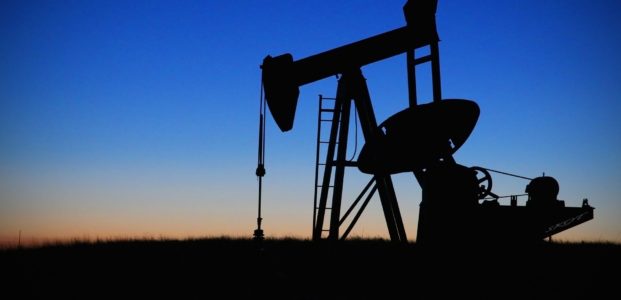SUMMARY
This is article summarizes the landmark “Redwater” decision (Orphan Well Association v Grant Thornton, 2019 SCC 5), in which the Supreme Court of Canada overturned the Alberta Court of Appeal and found that bankrupt companies are still responsible for the remediation of abandoned oil wells.
Introduction
On January 31, 2019 the Supreme Court of Canada published its landmark decision Orphan Well Association v Grant Thornton Ltd., 2019 SCC 5. This case laid the groundwork for who bears the financial burden for the cleanup of abandoned oil wells and other industrial equipment after an oil company has gone bankrupt.
Under the Bankruptcy and Insolvency Act, RSC, 1985, c B-3 (BIA), when a company enters bankruptcy, anyone who can prove they are owed money (i.e. has a provable claim) can make a claim on a part of the money or assets that the bankrupt company still has left. Anyone with a provable claim is paid in an order specified under section 136 of the BIA. Under the Constitution, the federal government has exclusive jurisdiction over bankruptcy.
Whereas the federal government has power over bankruptcy, provincial governments have jurisdiction over non-renewable natural resources and property and civil law. They have the power to regulate oil and gas companies, which includes ordering the permanent dismantling and reclamation of abandoned wells, pipelines, and other facilities.
The Case
Redwater, a now bankrupt oil company in Alberta, possessed 127 wells, pipelines, and other facilities. 107 of the assets were non-producing, invaluable assets when they entered bankruptcy. The estimated cost of remediation these invaluable assets was expected to outweigh any cost the trustee would have received from the sale of all 127 assets. The trustee working on behalf of Redwater decided to disclaim (disown) the invaluable assets and use the 20 valuable assets of Redwater to pay creditors.
The provincial regulator claimed that the disclaimed assets must first be cleaned up before creditors could be paid. Redwater’s trustee stated that because of section 14.06 of the BIA, they were not bound by the cleanup obligations. It claimed that to require them to comply with the provincial regulator, it would be creating a conflict and frustrating the purpose of the BIA. Under the constitutional concept of paramountcy1 when a valid provincial law and a valid federal law appear to be in conflict the federal law will prevail.
The Supreme Court said that there was no constitutional conflict between the BIA and the provincial regulator because, while a trustee is protected from personal liability of having to pay for environmental claims with its own money, it was still obligated to use the Redwood estate to pay for abandoned oil wells.
The Alberta Court of Appeal agreed with the trustee and said that the trustee was allowed to walk away from the sites, but when appealed to the Supreme Court of Canada they disagreed. The Supreme Court said that there was no constitutional conflict between the BIA and the provincial regulator because, while a trustee is protected from personal liability of having to pay for environmental claims with its own money, it was still obligated to use the Redwood estate to pay for abandoned oil wells. These environmental obligations fell outside of the BIA payment order scheme as they were not provable claims, instead they were valid provincial law that protected the public and landowners. As the cost of cleanup did not fall within the scheme of the BIA, the trustee had to abide by the obligations before they were allowed to sell any of Redwater’s estate valuable assets.
Since the 2015 Redwater bankruptcy, the trustee had attempted to sell 20 of Redwater’s valuable assets, which the court held in trust awaiting a decision from the Supreme Court of Canada. The money now must be used to decommission the equipment and reclaim the land at the abandoned sites before creditors are paid. As the money used for cleanup will be more than the cost of the valuable assets, there will be no money left for creditors.
Going Forward
This case comes out of Alberta, which has been dealing with a substantial increase in the number of orphaned oil and gas wells in the past five years. “In 2014, the Orphan Well Association listed fewer than 200 wells to be reclaimed. The most recent numbers show there are 3,127 wells that need to be plugged or abandoned, and a further 1,553 sites that have been abandoned but still need to be reclaimed.” In the annual report for the Oil and Gas Orphan Fund, the government of Saskatchewan listed 644 abandoned wells in Saskatchewan.
Saskatchewan has fundamentally different regulations regarding abandoned oil wells than Alberta but has seen an uptick in abandoned oil wells that at least somewhat mirrors Alberta. After collapse of oil prices in 2014, the Alberta regulatory schemes weaknesses became apparent. Strong regulation is needed to ensure that throughout the boom and bust cycle of oil and gas, abandoned oil wells are able to be properly decommissioned after use.
The decision by the supreme court also heavily relied on the court’s interpretation of section 14.06 of the BIA. The court commented that 14.06 was not a model of clarity. If parliament was to amend the section to include a “disclaimer” it would make it so trustees would not have to comply with end of life obligations in a bankruptcy. If an amendment was to be made to the BIA it would probably not attract much attention but could have far reaching implications on how trustee’s deal with abandoned oil wells in Alberta.
Although abandoned oil wells have local environmental concerns, the potential for leaking greenhouse gases from these wells means the proper cleanup will have far reaching effects on Canada’s climate.
- What is paramountcy? When two pieces of legislation result in conflicting obligations on an individual/entity - the federal law says "go left" and the provincial law says "go right" - the paramountcy doctrine has historically ruled that the federal legislation should prevail and the provincial law is inoperative to the extent that it conflicts. Read more about paramountcy here.


